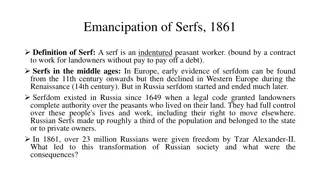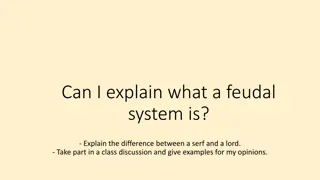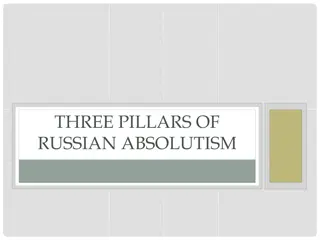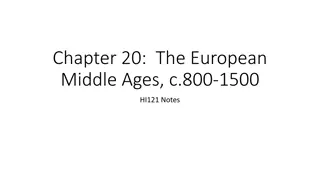Emancipation of Serfs in Russia: Causes and Consequences
The Emancipation of Serfs in Russia in 1861 marked a significant transformation in society. Influenced by various factors such as the Crimean War, pressure from nobles and intellectuals, growing peasant uprisings, and economic motives, Tsar Alexander II abolished serfdom. This decision aimed to alle
3 views • 11 slides
Understanding the Feudal System: Lords, Serfs, and Hierarchy
The Feudal System was a social hierarchy where the king held control, and peasants did the work at the bottom. Lords owned the land while serfs worked on it. Explore the differences between a lord and a serf, how the system provided order and stability, and the new form introduced in England. Join a
1 views • 5 slides
Key Figures and Reforms in Russian History
Explore the reigns of Alexander I, Alexander II, Alexander III, and Nicholas II in Russian history, highlighting their policies, reforms, and the societal impact of their rule. From Alexander I's efforts to modernize and his hesitance to free the serfs to Nicholas II's struggles with industrializati
0 views • 6 slides
Life in European Middle Ages: Social Structure and Daily Practices
The European Middle Ages witnessed a structured society with different classes such as workers, serfs, urban workers, warriors, and worshipers. Workers predominantly engaged in agricultural activities, serfs were bound to labor services and dues, urban workers faced economic challenges, warriors com
0 views • 14 slides



